‘Can’t even get 1 cent’: Residents’ livelihoods hit by Johor River pollution linked to sand mining
Malaysian authorities said a sand mining firm - identified as Hiap Aik Evergreen - could face sanctions for its alleged role in the pollution.
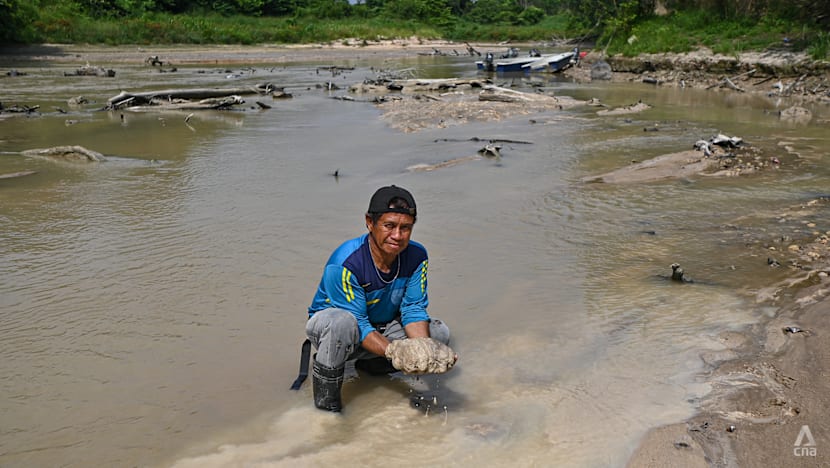
Majid Jantan, village chief of Kampung Orang Asli Sayong Pinang, shows sediment polluting Johor River, which has caused fish deaths and ecosystem damage over a 20-30km stretch and impacted livelihoods of local fishermen. (CNA/Zamzahuri Abas)

This audio is generated by an AI tool.
KOTA TINGGI, Johor: A pollution incident along the Johor River last week which led to around 800,000 people suffering unscheduled water cuts across the state has continued to irk residents, with some calling for strong sanctions against a mining company involved.
According to the Johor state government, a sand-washing pond at the company’s land sand-mining site in the Kota Tinggi district had burst, contaminating the Johor River and its tributaries.
This led to a surge in the turbidity level of raw water along the river last Friday and impacted supply to several water treatment plants downstream, including those by local operator Ranhill SAJ. Turbidity is a measure of water clarity, and high turbidity makes water appear cloudy or muddy.
As a result, this disrupted water supply to around 455,000 Ranhill SAJ accounts across four districts - Johor Bahru, Kota Tinggi, Pontian and Kulai districts.

Affected residents whom CNA spoke to expressed dissatisfaction at how the situation was handled by the authorities.
This included local fishing communities downstream who claimed that their livelihoods have been wiped out as they said that the pollution incident had exterminated the seafood population in the area.
Meanwhile, water quality experts and environmentalists stressed that local authorities should step up monitoring and mitigation measures to prevent such incidents from recurring.
Environmentalist Renard Siew, who is the climate change adviser to the Centre for Governance and Political Studies (Cent-GPS), a Malaysia-based behavioural and social science research firm, said that these water supply “disruptions” are depriving residents from a basic need.
“Fundamentally, it’s about minimising disruptions of water supply to households, ensuring businesses are not disrupted and preserving the livelihood of local communities, including fishermen … and agricultural activities that depend on clean water for irrigation,” said Siew.
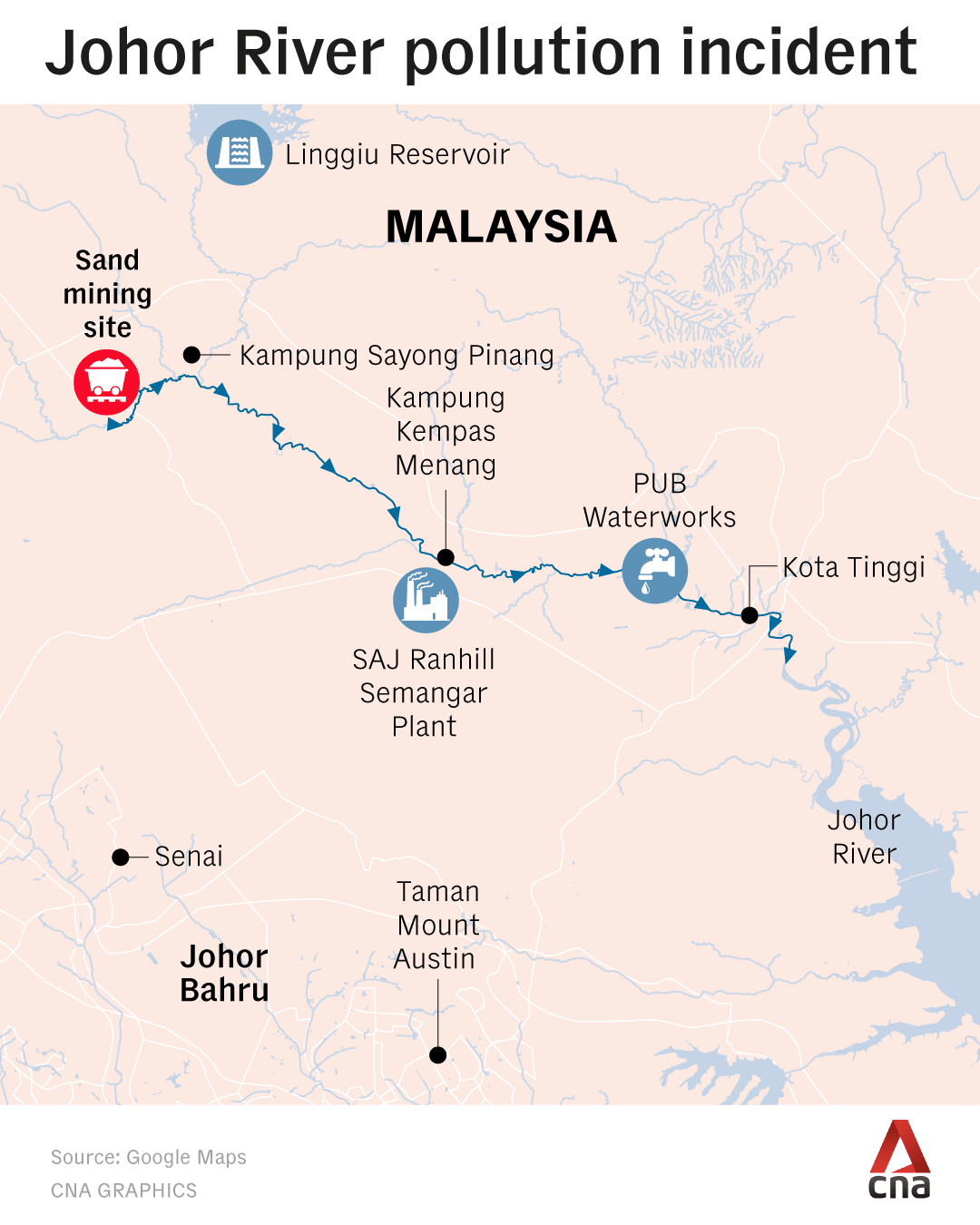
Based on the latest update from Ranhill SAJ on Monday evening, water supply had resumed to 93 per cent of the affected areas.
Over the weekend, operations at Singapore’s national water agency PUB’s Johor River Waterworks were also temporarily suspended but they resumed on Sunday after its checks found that water quality in the Johor River had “returned to normal levels”.
In a statement on Sunday, Malaysia’s Department of Environment (DOE) said the firm allegedly responsible for the pollution - identified as Hiap Aik Evergreen - was issued with a field citation.
It is required to submit a report on remedial works and was instructed to conduct “continuous monitoring” on all slit ponds that are in operation to ensure that pollution incidents do not recur.
The statement added that the department has the authority to impose sanctions on “any party that releases pollutants into the environment without authorisation” under the Environmental Quality Act 1974.
According to its credit rating report online, Hiap Aik Evergreen is involved in construction, trading of building services and transportation services. Its head office is listed to be in Ulu Tiram near Johor Bahru town.
RESIDENTS DEMAND COMPENSATION
Fishermen at Kampung Orang Asli Sayong Pinang, a village located around 2km downstream from the mining incident, told CNA on Tuesday that they have been unable to fish since Oct 31, impacting their only source of income.
They claimed that the pollution incident had also exterminated fishes in their breeding farms and destroyed seafood catch in the area.
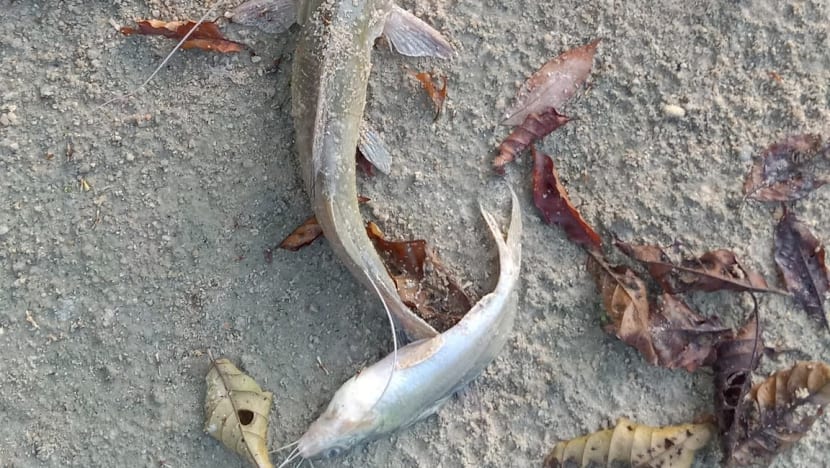
Among them was Azman Inam, one of around 150 fishermen who fish in the Johor River for their livelihoods. This number includes registered fishermen from neighbouring villages Kampung Orang Asli Pasir Intan and Kampung Kempas Menang.
Azman told CNA that he does not have any cash to give pocket money to his five children as he has been unable to fish since Friday.

“Our income is around RM100 (US$24) a day at least. Sometimes it can reach RM300 or more. But after several days, we can't even get RM1, and not even 1 cent anymore,” said the 47-year-old.
When CNA visited a section of the river near Kampung Orang Asli Sayung Pinang on Tuesday afternoon, the water appeared murky and had a clay-like texture. Parts of the river appeared dried up and no fishes could be seen from the surface.
Village chief Majid Jantan told CNA that he had lodged a police report against the firm responsible, adding that the community had demanded RM160,000 in compensation from the firm in the report as damages from the fishermen’s loss of income.
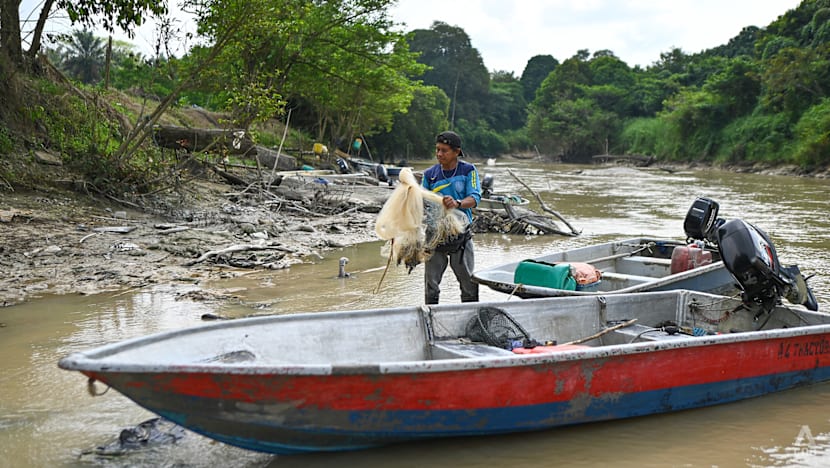
“You have to remember that the losses we suffer are ongoing. The pollution has wiped out the fish population in this area and it might take years before the ecosystem returns to normal,” said the 63-year-old.
During a visit to the village on Monday, Johor police chief Ab Rahaman Arsad confirmed that three police reports had been lodged on the incident so far - two of which were filed by affected residents and the other by Ranhill SAJ.
He added that police were monitoring the situation and assisting the DOE in its investigations.
Water quality specialist Zaki Zainudin noted that as announced by authorities, the flow of silt and sediment which resulted in the contamination of water reached 37,400 Nephelometric Turbidity Unit, far exceeding the 1,000 Nephelometric Turbidity Unit threshold guideline for raw water to be processed at water treatment plants.
“In terms of the (mass fish deaths), that was probably because their gills were clogged with silt, making it difficult for the fish to breathe,” said Zaki, who is an expert panelist for the DOE and is adviser to environmental consultancy firms.
“If the silt levels are high enough, dissolved oxygen in the water can also drop drastically. Either case, (the fishes die) by asphyxiation.”
CNA also visited a hill overlooking the site where the pollution incident allegedly occurred and saw ongoing construction work to repair the sand-washing ponds.
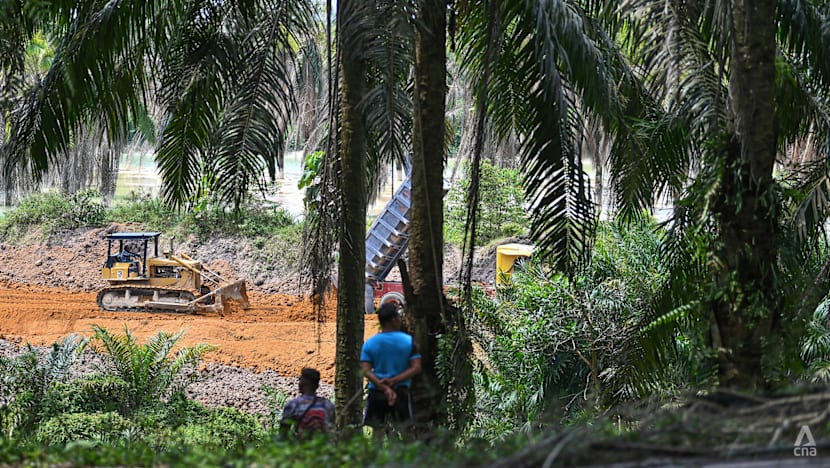
Beyond those living in the immediate vicinity of the incident site, residents situated 60km away were also impacted due to loss in water supply.
Local media reported how residents in areas like Taman Pelangi and Taman Nora in the city centre had to resort to bathing in mosques and queueing up for water at tankers sent by Ranhill SAJ.
A manager at a car wash firm located at Taman Perling in Johor Bahru who wanted to be known only by the name of Muhammad told CNA that business was halted for a day on Saturday due to no water supply. Business resumed on Sunday after the water supply came back, he said.
“We lost about RM5,000 in (income), especially because Saturday is usually our best-performing day. I really hope authorities will make the (errant) firm pay us back in damages,” added Muhammad.
The manager added that this was the second water supply cut he has experienced in six months, after an incident in May which also shut his business for a day.
Back then, authorities said that around 300,000 residents in Johor were affected following faulty pumps at a Ranhill SAJ water treatment plant.
CNA has reached out to Hiap Aik Evergreen for comment, including whether it would be issuing compensation to impacted residents and what measures it is taking to prevent this incident from recurring.
CALLS FOR MORE ACCOUNTABILITY ON ERRANT FIRM
State assemblyman for Skudai Marina Ibrahim issued a statement on Monday urging more accountability from the state government following complaints from residents under her care who experienced temporary loss in water supply “for days” during the recent incident.
“We don’t want to keep hearing news like ‘will be charged’, ‘will be fined’ or ‘has been warned’,” said Marina.
“What people really want to know is - how will this incident serve as a lesson so it doesn’t happen again? … Not just pollution from sand mining, but from ammonia and other sources too.”
This river pollution incident is not an isolated case in the southern state.
Infamously in 2019, illegal dumping of toxic waste at Sungai Kim Kim in Pasir Gudang resulted in toxic fumes that affected thousands of residents and led to about 100 schools in the area being shut down.
In October 2021, Johor ruler Sultan Ibrahim Sultan Iskandar criticised some residents for disposing of their waste into the drainage network, leading to floods in various parts of Johor Bahru.
More recently in September last year, toxic chemical pollution along rivers in Johor led to the closure of three schools, leading to the formation of a special task force to tackle the issue.

Given the scale of the pollution incident last week, there has also been calls from opposition politicians for Johor Chief Minister Onn Hafiz Ghazi to weigh in on the issue.
Onn Hafiz has not issued a statement on the latest water disruptions, and a press officer from his team told the media that the infrastructure executive committee led by Fazli Salleh will be the state’s representative on the matter.
Alias Rasman, youth chief for Parti Pribumi Bersatu Malaysia’s (Bersatu) Johor chapter, issued a statement on Tuesday outlining how Onn Hafiz’s purported silence was “disappointing” as Johoreans need a leader “to step forward when they are struggling”.
“Even more concerning is this: How can Johor manage major investments such as data centre projects if issues like river pollution and water supply disruptions have yet to be resolved?” he added.
On how to better enforce against such incidents, Zaki the water quality specialist suggested that water pollution laws in Johor be more stringent especially since the state has sensitive water catchment areas.
He noted that as pointed out in DOE’s statement on the issue, the mining activity that led to the pollution incident was not subjected to an environment impact assessment as the land encompassed less than 20 hectares, a “legal limitation under existing federal law”.
However, he pointed out that in other states like Selangor for example, such mining activities are regulated under state licensing regulations which allows the state authorities to conduct more stringent enforcement.
“Perhaps it's high time for other states to follow in the footsteps of Selangor?” said Zaki.
“That said, strategic management of pollution in a water catchment area is the better, more sustainable solution … At the very least, high risk pollution activities should not be allowed upstream of major (or) critical water intakes,” he said.
“This is especially true in the case of Johor, which has constrained water resources.”
Zaki also suggested that water operators like Ranhill SAJ be more proactive in catchment monitoring by setting up a dedicated team to detect potential pollution as well as consider off-site river storage facilities to help ensure continuous supply of clean water during bouts of disruptions.
Meanwhile Siew, the environmentalist, warned that continued pollution in the Johor River would have long term consequences for the southern state.
“If the water continues to be contaminated, this affects food security, health. I think this incident puts into light how water is a fundamental right for every one,” he added.




















